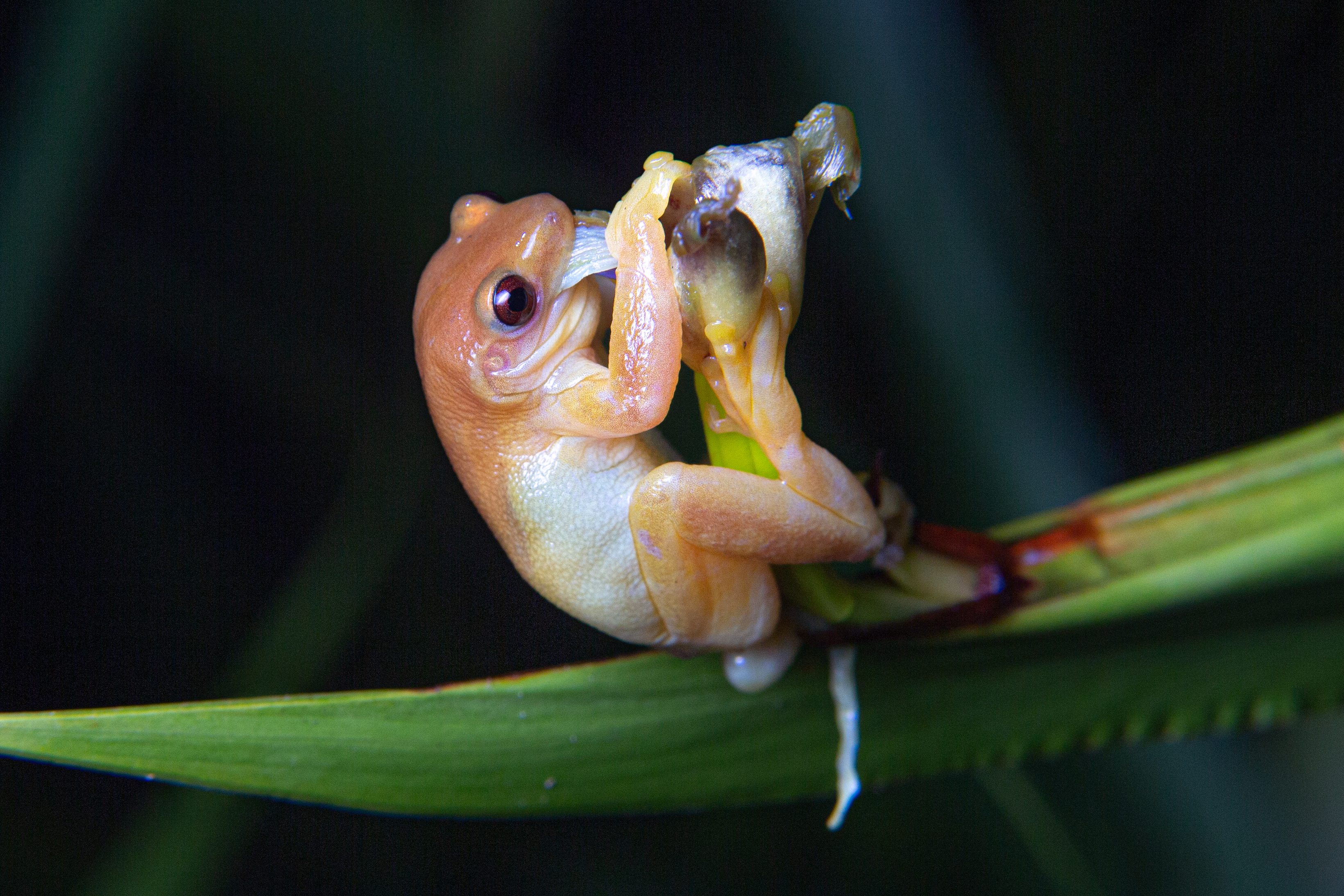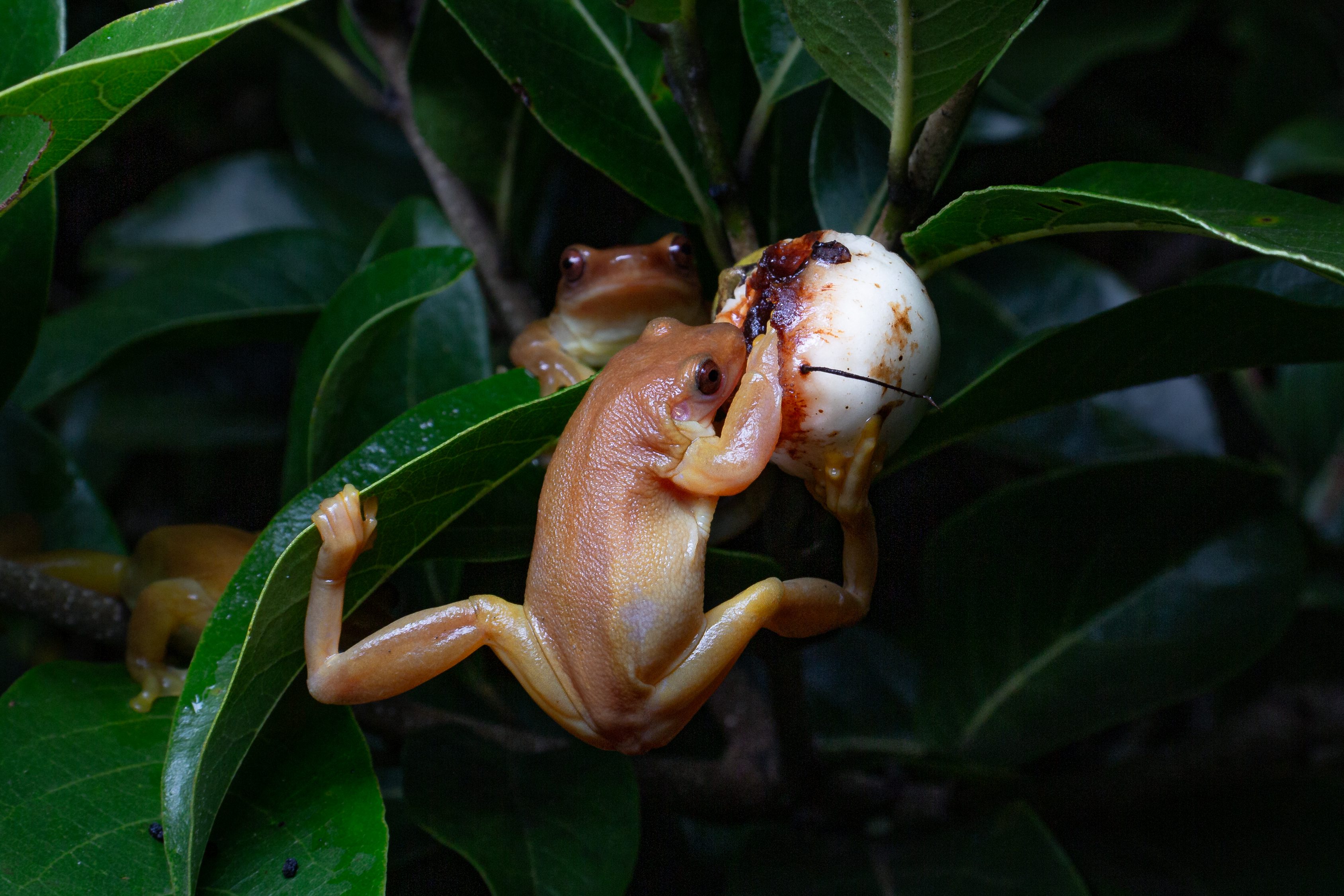The relationships between plants and their pollinators, typically insects, is well documented, especially given the effect of disease, climate change, and pesticides on the welfare of the creatures involved. However, researchers in Brazil have now discovered a new relationship between a plant and a very surprising creature.
The Izecksohn’s Brazilian treefrog (Xenohyla truncata) has been observed dunking its body inside the flowers of the Brazilian milk fruit tree (Cordia taguahyensis). This species is already known as a seed disperser and has the unusual diet of being omnivorous with a special liking for fruits, and only occasionally preys on the more common frog prey of invertebrates.
This frog is found in the coastal plains of the state of Rio de Janeiro, Brazil, where it spends the day sheltering inside bromeliad plants. It is already considered unique owing to its role as a seed disperser, and now researchers think it could also be dispersing pollen.
The researchers observed the frogs eating both the petals and nectar of the milk fruit tree and eating flowers from a second tree species, the alien bearded iris (Iris x germanica). During the observation the researchers noted the frogs eating fruit and flowers from these trees with suction-like movements. One frog was observed fully entering a flower, and when it emerged after approximately five minutes there were pollen grains stuck to its back.

Nom! Image courtesy of Carlos Henrique de-Oliveira-Nogueira
These observations represent the first time that any frog species has been observed actively feeding on nectar and flowers. This research also represents evidence that these frogs may act as pollinators.
The team suggests that aside from seed dispersal, the frogs could benefit from consuming these flowers and fruits in other ways. Calling is a highly energy resource-intensive activity for these frogs and consuming nectar, which could have a high energy content and sugar concentration, could be one way to meet these demands. For female frogs, producing immature egg cells called oocytes is highly energy-intensive, so eating nectar and fruits in the breeding season could provide an advantage.

X. truncata nibbling a Cordia taguahyensis fruit. Image courtesy of Carlos Henrique de-Oliveira-Nogueira
These Brazilian treefrogs may not be able to be classed as true pollinators because they destroyed the flowers of the iris while reaping the benefits. However the opposite is true for the milk fruit tree, in which the flowers were not damaged and the pollen was stuck to the frogs’ backs after the nectar had been consumed.
The researchers suggest that these new observations shed light on this species, and suggest that they could consume flowers and fruits from other plant species that have yet to be seen.
The study is published in Food Webs.
Source Link: Never-Before-Seen Frog Behavior Suggests They Could Be Plant Pollinators